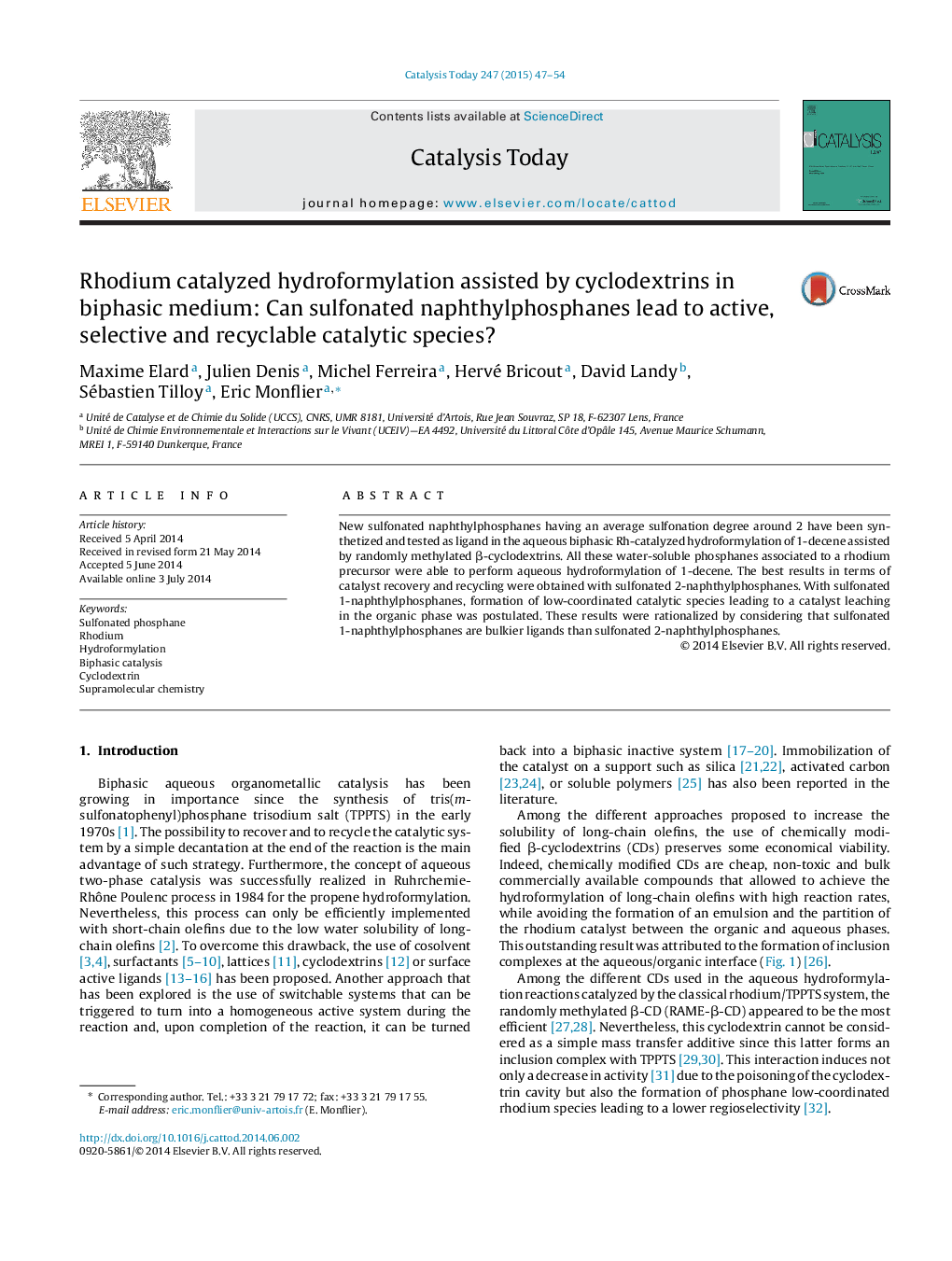| Article ID | Journal | Published Year | Pages | File Type |
|---|---|---|---|---|
| 54011 | Catalysis Today | 2015 | 8 Pages |
•Sulfonation of naphthylphosphanes leads to aqueous ligands with a sulfonation degree around 2.•2-Naphthylphosphanes lead to active and recyclable catalytic systems.•1-Naphthylphosphanes lead to a decoordination of the phosphanes from the metal center under CO/H2 atmosphere.•Displacements toward low-coordinated species were observed in the presence of RAME-β-CD.
New sulfonated naphthylphosphanes having an average sulfonation degree around 2 have been synthetized and tested as ligand in the aqueous biphasic Rh-catalyzed hydroformylation of 1-decene assisted by randomly methylated β-cyclodextrins. All these water-soluble phosphanes associated to a rhodium precursor were able to perform aqueous hydroformylation of 1-decene. The best results in terms of catalyst recovery and recycling were obtained with sulfonated 2-naphthylphosphanes. With sulfonated 1-naphthylphosphanes, formation of low-coordinated catalytic species leading to a catalyst leaching in the organic phase was postulated. These results were rationalized by considering that sulfonated 1-naphthylphosphanes are bulkier ligands than sulfonated 2-naphthylphosphanes.
Graphical abstractFigure optionsDownload full-size imageDownload high-quality image (124 K)Download as PowerPoint slide
